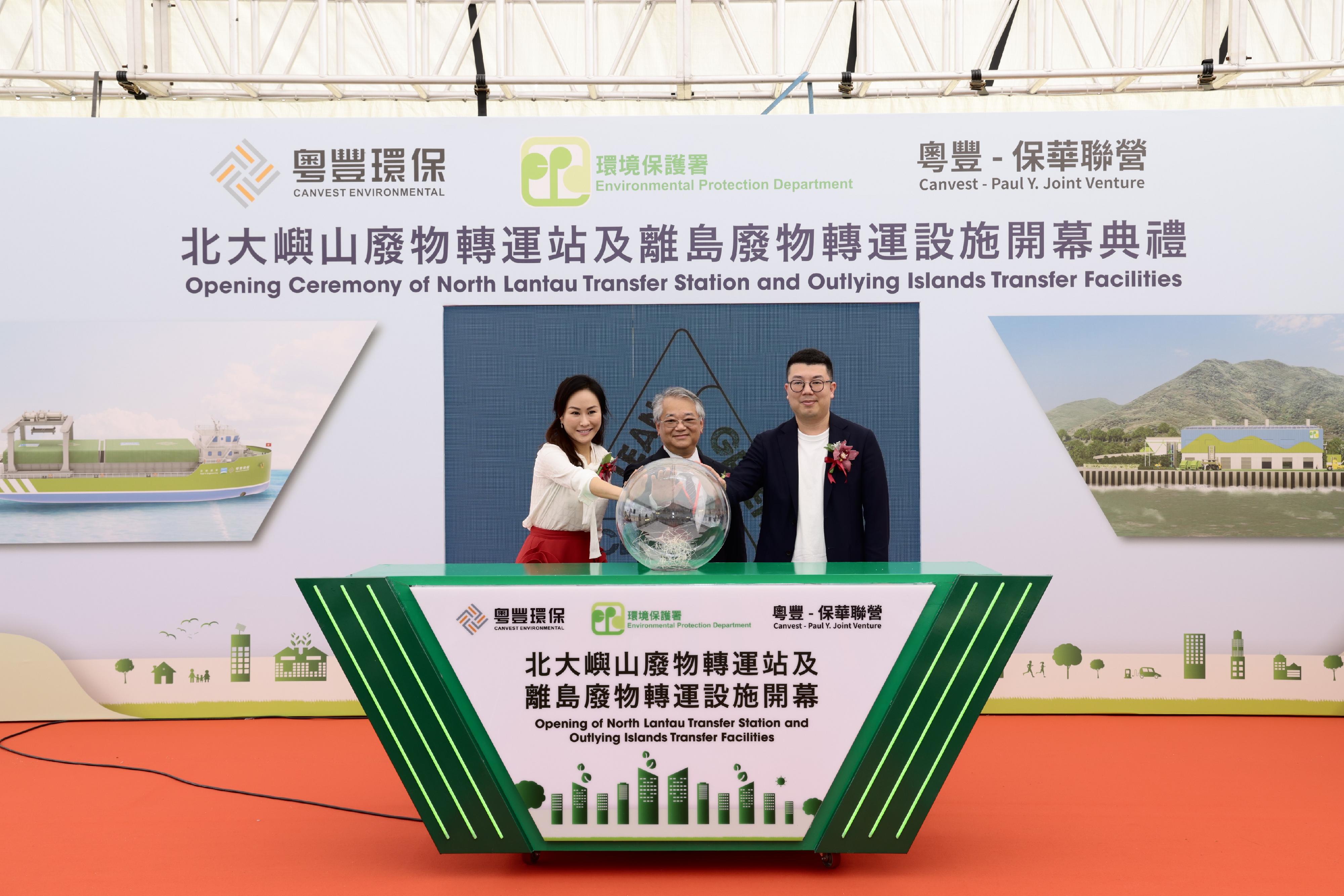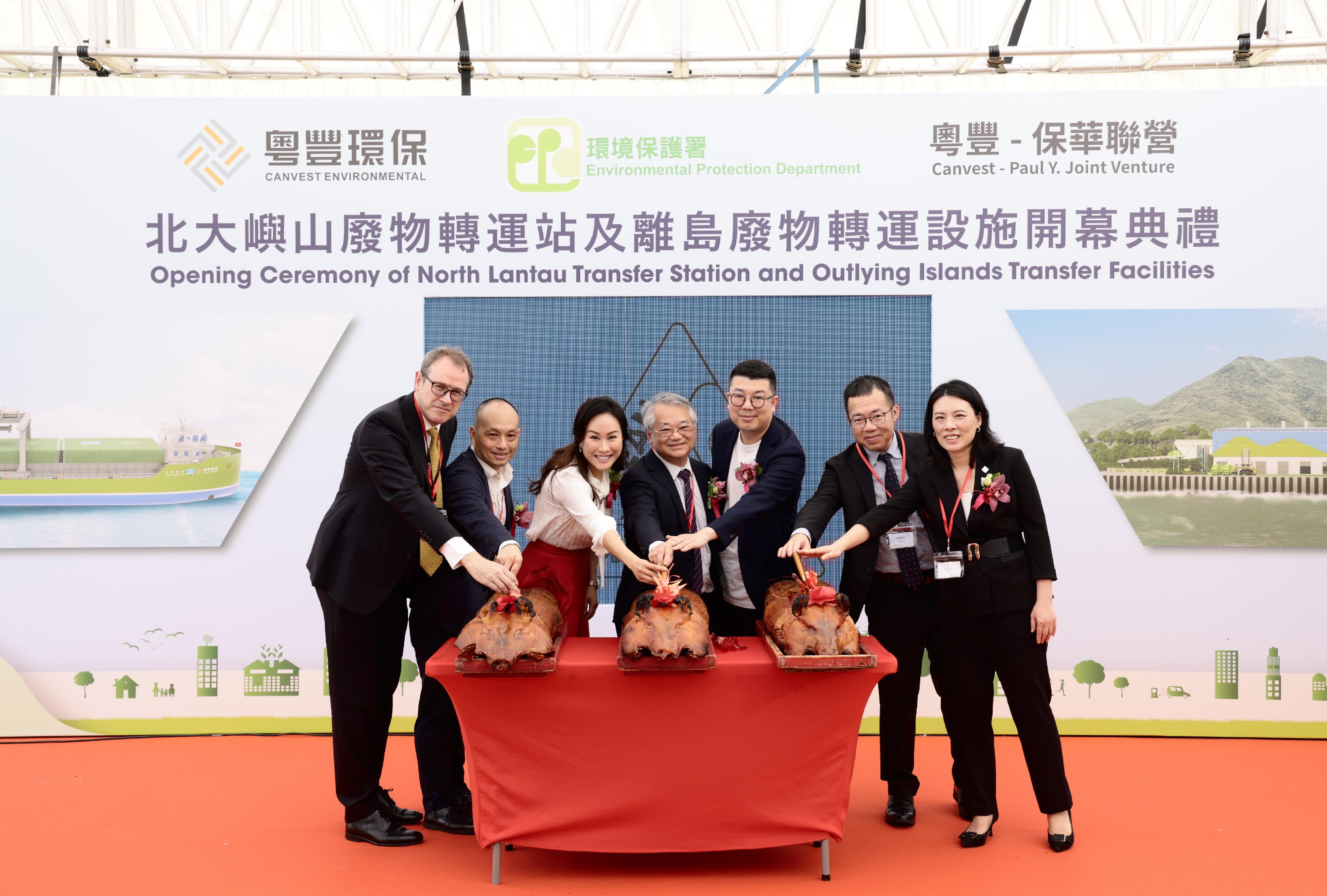Refurbishment and upgrading works of North Lantau Transfer Station and Outlying Islands Transfer Facilities commence smoothly (with photos)
The Environmental Protection Department (EPD) said that the North Lantau Transfer Station (NLTS) and Outlying Islands Transfer Facilities (OITF) Second Follow-On Contract has been implemented, with the refurbishment and upgrading works of the transfer station and transfer facilities commencing smoothly.
The EPD today (June 24) held a ceremony for the North Lantau Transfer Station and Outlying Islands Transfer Facilities Second Follow-On Contract. The contract was won by Canvest – Paul Y. Joint Venture (CPJV). The lead joint venture participant is Canvest Environmental Protection Group Company Limited, which is a renowned waste management company and is also participating in cleaning and waste collection services in Hong Kong.
Addressing the ceremony, the Director of Environmental Protection, Dr Samuel Chui, said, "The NLTS and the OITF have been smoothly handed over to CPJV for operation. Upgrading works will be carried out progressively in the coming years. So far, the operation and construction works have been implemented smoothly. The EPD will work together with the contractor to provide safer and more reliable refuse transfer services to the public, so that the NLTS and the OITF can become exemplary refuse transfer facilities with new technology and excellent operational performance."
The NLTS is located at Sham Shui Kok Drive, Siu Ho Wan, on North Lantau, while the OITF comprises a network of seven small-scale waste transfer facilities located at Mui Wo, Cheung Chau, Peng Chau, Hei Ling Chau, Yung Shue Wan, Sok Kwu Wan and Ma Wan. The NLTS and the OITF have been in operation for over 20 years. During the refurbishment and upgrading works period, the daily waste transfer services at the above transfer station and transfer facilities will be maintained.
To achieve carbon neutrality, the EPD incorporated a number of measures in the new contract with a view to reducing carbon emissions during the waste transfer process. These include upgrading aged waste container vessels with new energy-saving and zero-emission electric propulsion models, using more energy-efficient waste treatment equipment, enhancing energy-saving management, improving energy efficiencies of buildings and conducting renewable energy projects. Renovation and upgrading works also include the provision of a Grease Trap Waste Treatment Facility, an upgraded odour control system, enhanced vehicle washing facilities, and improving the environment. The new design and landscaping measures for the transfer station and transfer facilities will also better integrate them into the surrounding environment, aiming to achieve harmonious coexistence with the community.

